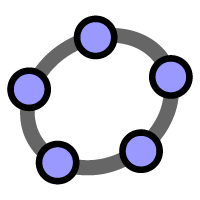ShahdagMountains
Diamond Member
- Jan 16, 2012
- 9,128
- 8,273
- 2,128
Simplest case, is moving in a straight line, and not accelerating (so, constant velocity). This is called an "inertial" reference frame.
In such a reference frame, distance and angles confirm to a "local Cartesian coordinate system", meaning distance can be measured by a yardstick and time by a clock.
The fundamental principle of physics is that the laws of physics are the same from any reference frame. So if as you say the two asteroids are moving directly at each other, we should be able to exchange reference frames, in other words A looks to B exactly as B looks to A. This is what the Lorentz transformation does, it leaves the physical observables invariant when we swap reference frames.
The weirdo thing about our universe is, the geometry isn't flat, it's hyperbolic. In inertial reference frames this structure is called "Minkowski space". To understand it, you can define an "event" as occurring at a point in space and time. So, in a flat Euclidean geometry the distance between two events would be given by
D = t^2 + x^2 + y^2 + z^2
where t is the time difference and x, y, and z are the space differences.
But Minkowski space doesn't work like that. It works like this:
D = t^2 - x^2 - y^2 - z^2
It is an example of a "non-Euclidean" geometry.
So, using this, you can figure out the Lorentz transformation for any two inertial events.
First, in keeping with the fundamental principle of physics, the speed of light is the same (constant) from any reference frame. Therefore, you can calculate the Lorentz factor as follows:
L = 1 / sqrt (1 - v^2 / c^2)
where L is something like the "amount of compression" as the velocity increases. When v is near 0, the compression factor is 1, which means you see something like the actual velocity. But when v is near c, the compression factor grows without bound, meaning that what you see is always "a fraction of" the speed of light, and you'll never quite hit the actual speed of light (cause if you did you'd be dividing by 0, making the compression infinite).
You can derive this equation from the "Lorentz group", or alternatively using the Minkowski metric. Because of the reciprocity of reference frames, it only describes a situation where one of the reference frames can be translated (or rotated, or sheared) to the origin. And left fixed there, during the measurement of the spacetime events.
If you're accelerating, or equivalently if your spacetime is curved, you have a more complicated situation and you have to use general relativity instead of special relativity. In general relativity, the assumption of yardsticks and clocks breaks down (because of the curvature), and you have to use a "metric tensor" to measure distances and angles.
Scruffy, can you answer this one for me:
I’m a big fan of the Dulles Air and Space Museum.
And l’ve often wondered, in the context of planes taking off and landing, flying around the globe etc.
Given the Earth is a moving object, spinning on its own axis, at the same time circling around the sun, how does one moving object (the plane) interact with another moving object (the Earth)? Do the scientists have to figure all this stuff out?
